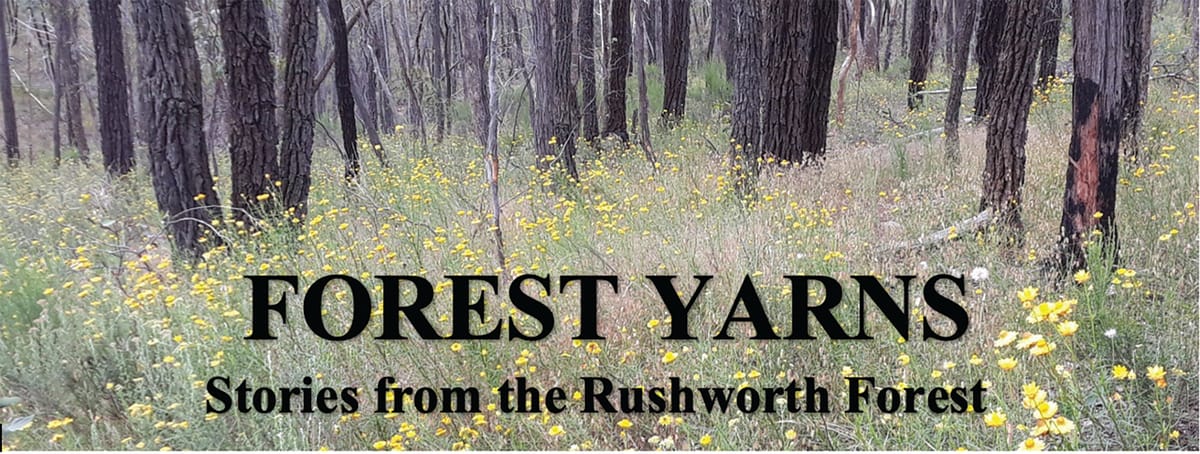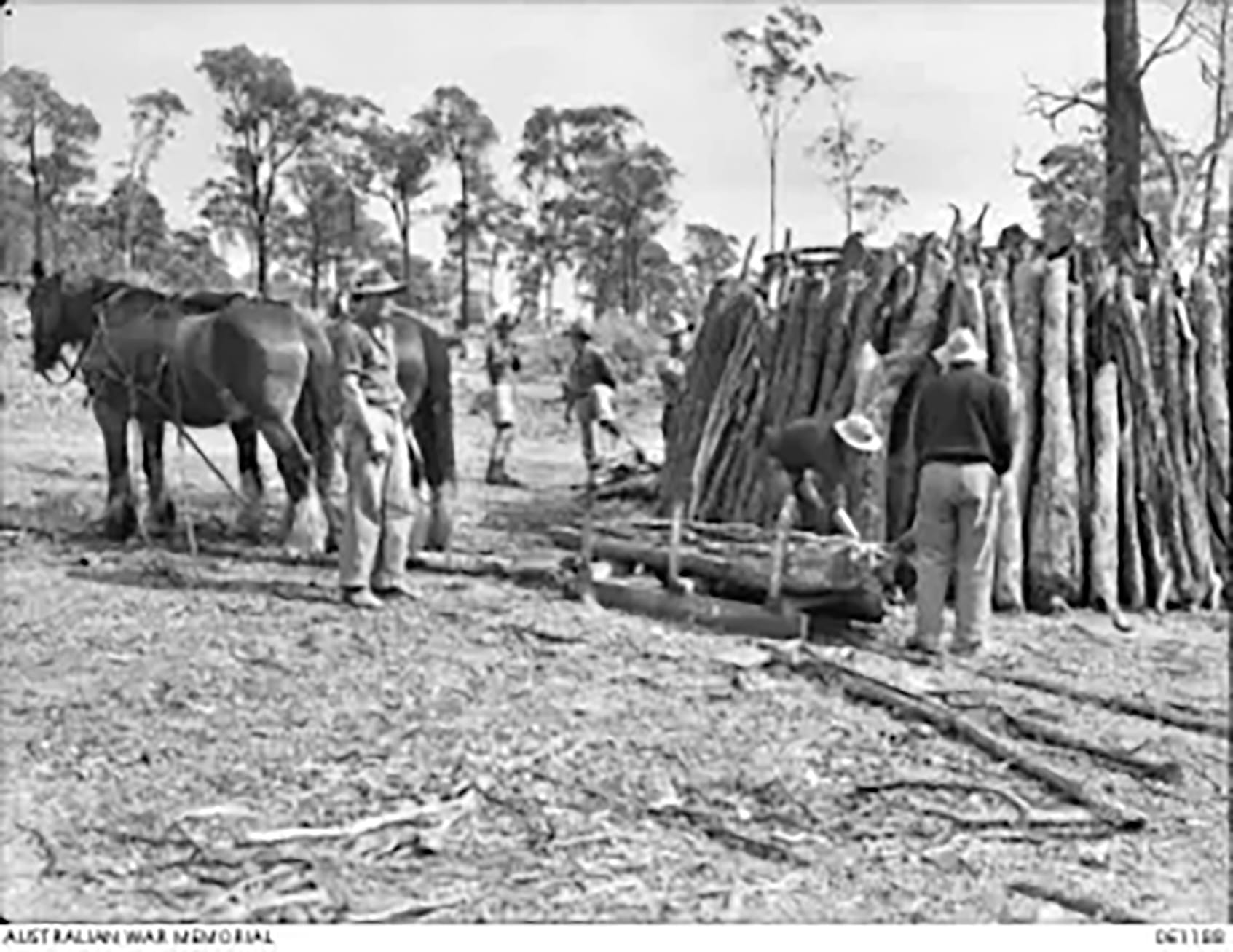Aliens, Prisoners, Refugees, Unemployed, Soldiers and Sussos
When there were labour shortages, such as during the two world wars, disparate groups like prisoners of war and so-called “aliens” (civilians who had lived in Australia or other British countries who were deemed to be a security risk) were put to work in the forest.

At various times in its history, work has been carried out in the Rushworth forest by a broad array of different ethnic groups and people suffering financial hardship. For instance, when there was unemployment, such as in the Great Depression of the 1930s, work schemes were set up which provided employment. When there were labour shortages, such as during the two world wars, disparate groups like prisoners of war and so-called “aliens” (civilians who had lived in Australia or other British countries who were deemed to be a security risk) were put to work in the forest. Post-war, there were refugees who had migrated to Australia and needed a start in life in their new country. Also, soldiers had returned who needed time to readapt to society, and the forest was a pretty good place to ease back into life in Australia.

Ex-Soldiers
By 1918, soldiers were beginning to return to Australia from World War 1. Many were physically injured or mentally traumatised by their experiences. There was also a shortage of manpower because so many young men had gone overseas with the AIF.
One of the employment schemes that was devised was to employ ex-soldiers in the Rushworth-Heathcote forest “cleaning up dead timber and useless debris”. Much of this timber was wastage from harvesting of products such as railway sleepers and telegraph poles. Where possible, the workers produced “cord wood” i.e. engine fuel as well as salvaging whatever they could for domestic firewood.1
Economic Downturn
During periods of unemployment, extra men were sometimes employed in the forest. There was a depression in the 1890s and a camp was set up outside Rushworth, close to Whroo. The men were supplied with tents, tools (saw, file, axe, maul and grinding stone) and rations and worked under the supervision of a forest officer. Initially there were 90 men at the camp, most of whom were cutting firewood. A small number produced railway sleepers. The men were paid small sums of money for the products they produced.2
In 1903 a gang of fifteen local unemployed men were engaged “thinning out and clearing up” the forest around Whroo. First preference was given to married men who had already had some experience working in the forest.
Great Depression
In 1929 at the start of the Great Depression, levels of unemployment were rising rapidly. Employment of more men in the forest areas of Victoria, including Rushworth, was urged.3
By mid-1931, as the situation worsened, forest camps were set up in eighteen locations in Victoria, including the Rushworth forest. Each camp housed 25 men, 30% of whom had to be from the ranks of the local unemployed. The men worked a four-and-a-half-day week, receiving 11/11 a day (about $1.20).
The men worked under the supervision of Forest Commission officers and employees. One of their main duties was thinning trees to accelerate the growth of the best trees. They also produced products such as fence and telegraph posts. Sales of these items were intended to offset the cost of the scheme.4
Prisoners Of War And Internees
During World War 2, camps were set up around the Waranga Basin to house prisoners of war (Camp 13) and civilian internees (Camps 1-4). There was also a forest camp at Graytown. Some of these people were put to work in the Rushworth forest.
In the forest south of Rushworth, there is a spot still referred to as Aliens’ Hut. There remains a dam and the concrete slab of the shower block still on the site but the accommodation hut has long since been removed. The workers were often of Italian descent because they were generally regarded to be more trustworthy than some of the other groups of internees and prisoners. However, they were not always compliant. An alien named Antonio Villante was charged with refusing to cut wood in 1943.5 Soon after that, two Germans (Gerhard Hartlich and Richard Miczek), both in their 20s, escaped from a wood cutting party in the forest. They were captured near Echuca about a week later.
At Graytown, some of the survivors of the crew of the German raider “Kormoran” were housed for a time at the Graytown camp and worked in the forest. The “Kormoran” had sunk HMAS Sydney off the coast of Western Australia in 1941 and was damaged herself, having to be scuttled. Over 300 prisoners finished up in camps in Australia, some of whom made Australia their home after the war.
References: 1 The Herald 9/4/1918; 2 The Age 24/7/1893; 3 The Age 11/7/1929; 4 The Herald 16/7/31; 5 Shepparton Advertiser 28/5/43.




